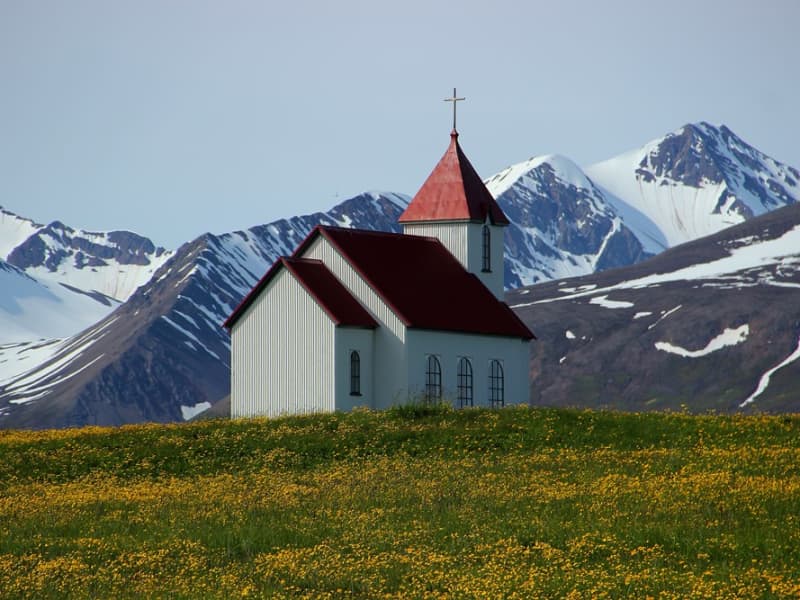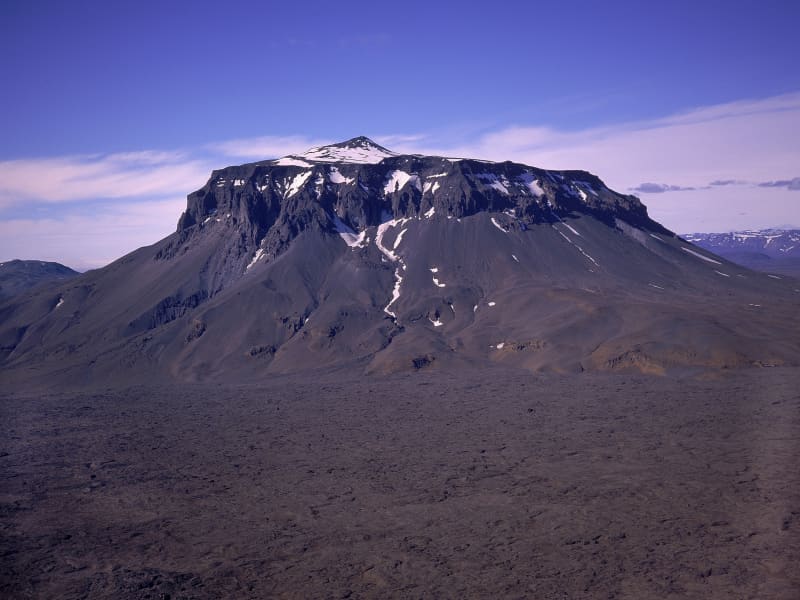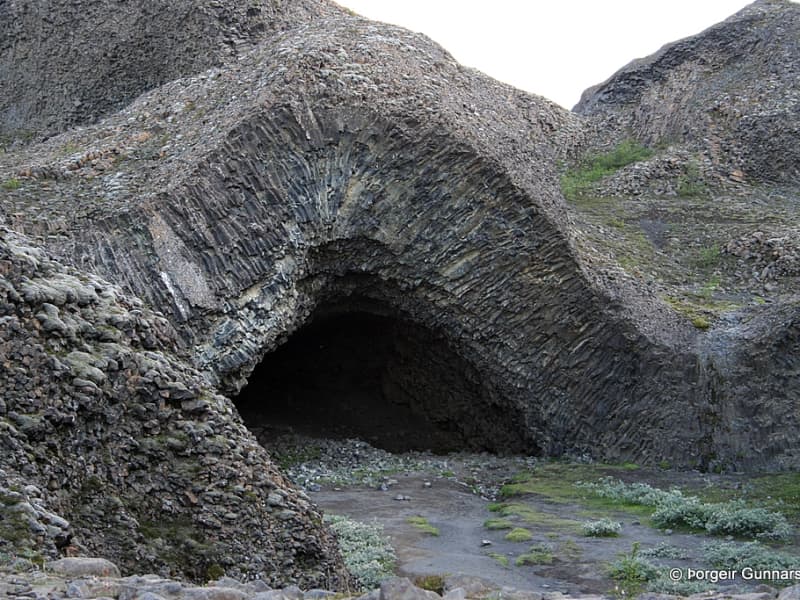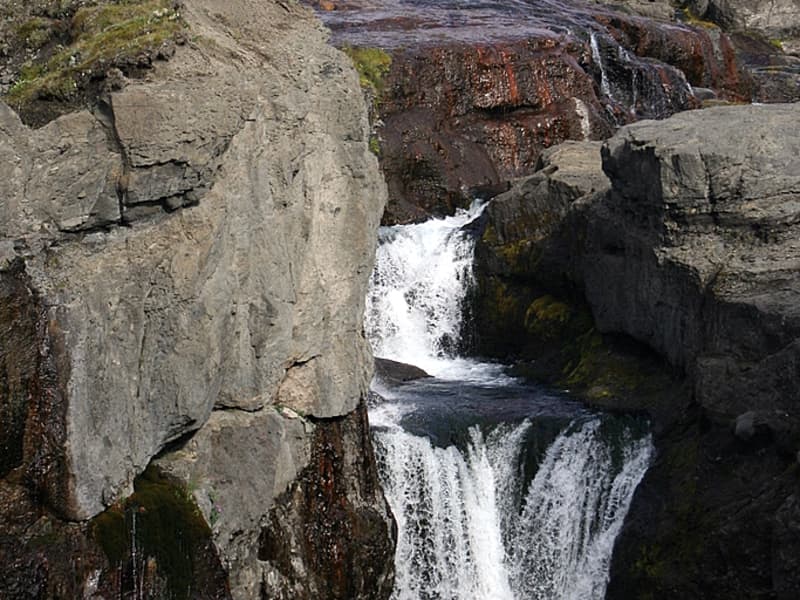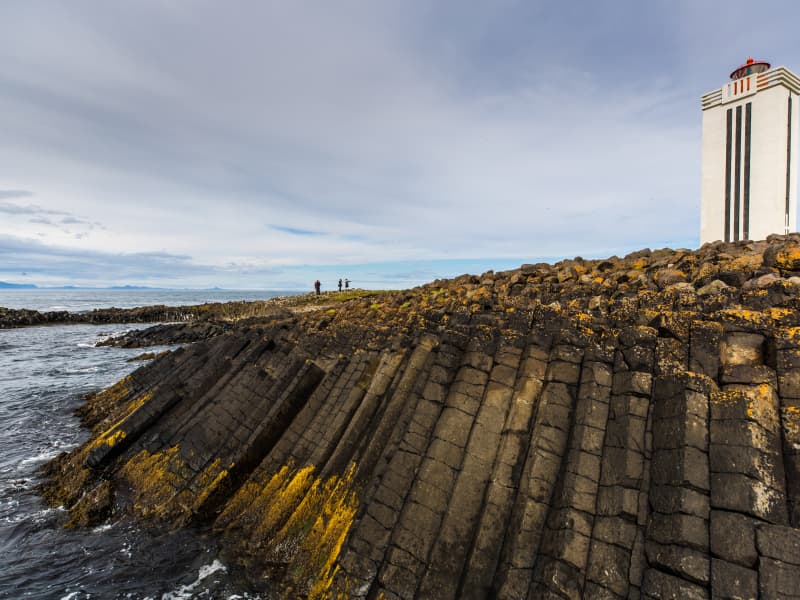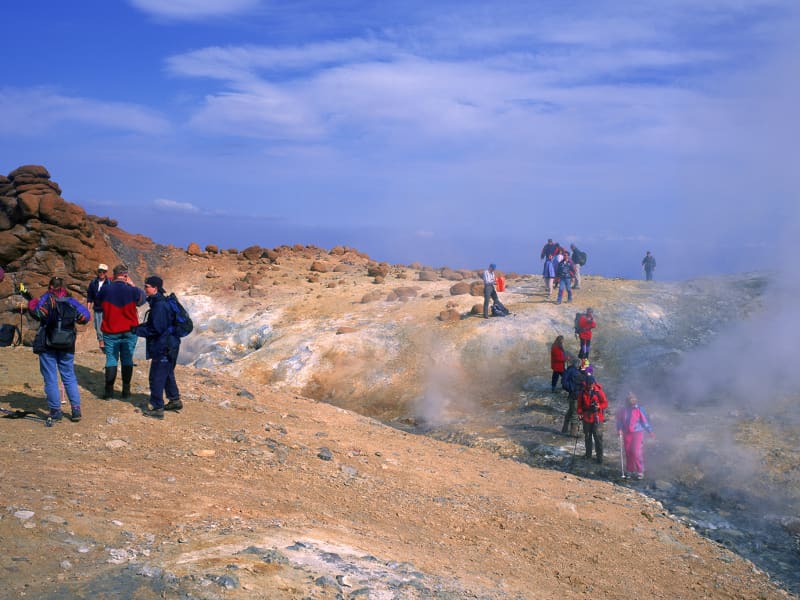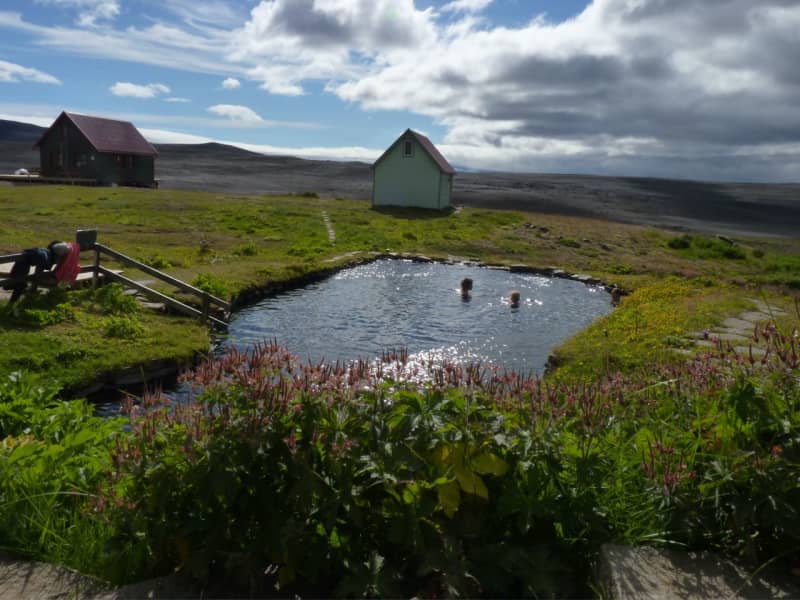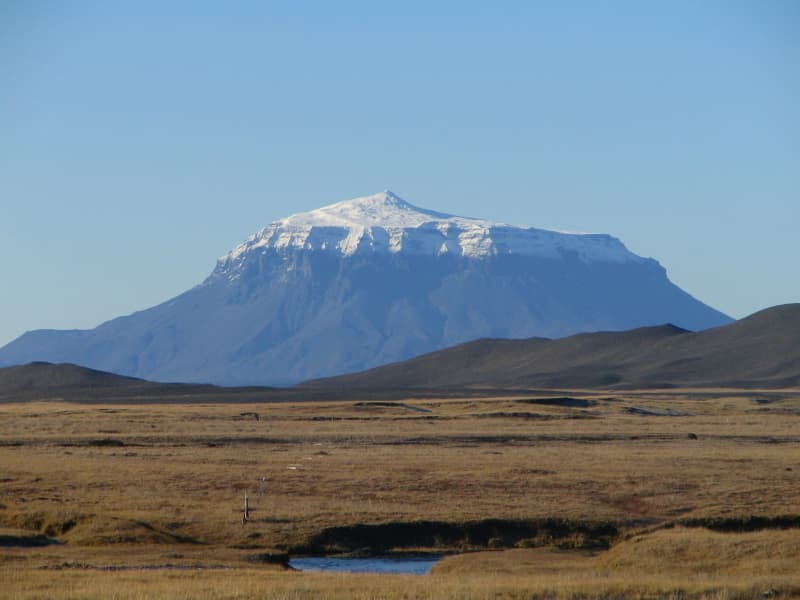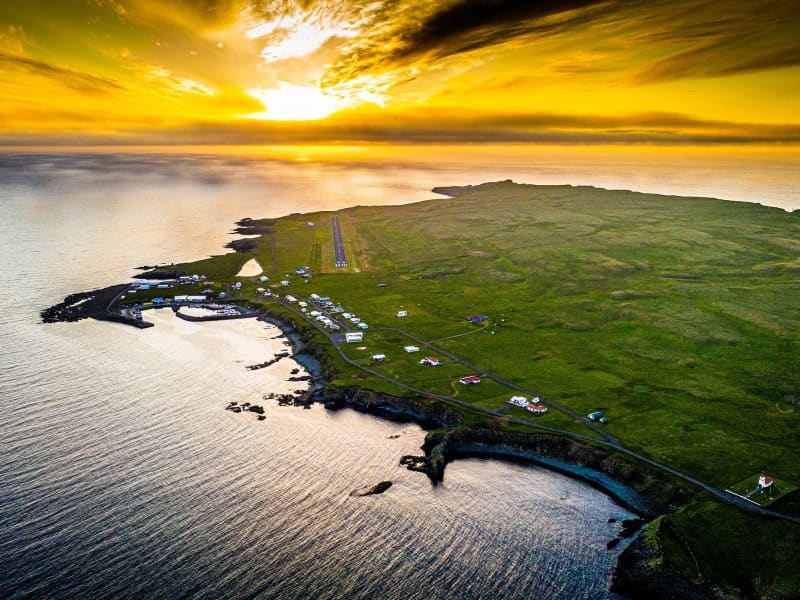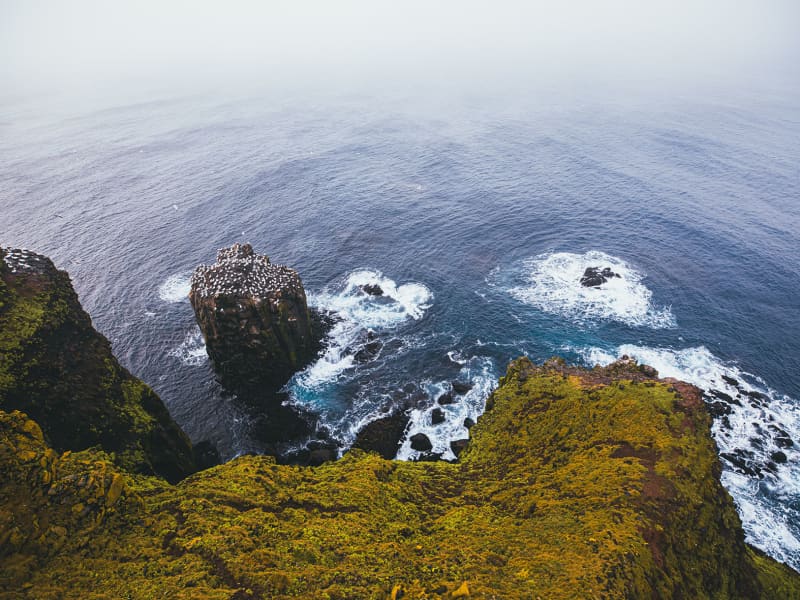Grímsey Island
It's a unique feeling to walk around the green island of Grímsey. Look to the horizon on the Atlantic ocean in the north, or turn your head to the south to see the glistening mountain tops of the shoreline of North Iceland. In this remote place, it's easy to imagine you are alone in the universe, even though roughly 70 people call this island their home. Feel the birds' vibrating sounds in the cliffs, see the puffins poke their head up from their nests, and the roaming sheep eating the green grass. There is no place quite like Grímsey.
The travel to the island is an adventure in itself. Either you fly for about 20 minutes from Akureyri or take the ferry from Dalvík that gets you there in 3 hours. Some only stop for a few hours, but many choose to stay for a few days, disconnect from the busy life, find their connection to nature, and relieve stress. In Grímsey, two guesthouses are open year-round, but it is best to book your stay in advance, especially during summer. In the small village, you'll also find a small convenience store, a café, and a restaurant (pre-booking recommended during the off-season.)
One of the major attractions of Grímsey is the puffin that makes its nest in the cliffs in April and goes back to sea in August. Another one is the Arctic Circle, with many visitors aiming to step over the circle. In 2017 a new landmark was revealed that signifies where the Arctic Circle goes through the island. It's a giant ball and is called "Orbus et Globus. " Weighing almost 7 tons, it is moved each year to align to the Arctic Circle.
A visit in the summertime is highly recommended, but a visit during winter will not disappoint. With little sunlight, the isolation from others almost becomes tangible, with the Northern Lights dancing around in the sky.

